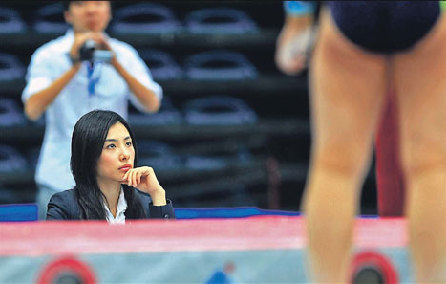For almost a century, the ultimate goal of every gymnast was a perfect 10.
At the 1976 Montreal Games, a petite 14-year-old from Romania, Nadia Comaneci, created Olympic history by becoming the first gymnast to score a 10.00. Sadly, perfection in gymnastics is no longer possible.

Gymnastics judge Liu Xuan observes an uneven bars routine during this year's National Gymnastics Championships in May. [China Daily]
|
Just as figure skating was forced to change its age-old 6.0 scoring system following a judging scandal at the 2002 Winter Games, gymnastics' judging had its watershed moment at the 2004 Athens Olympics.
A spate of disputed medals left officials under no illusion that the scoring format had to be revamped.
The old method was consigned to history, following the 2005 World Championships in Melbourne.
A new accumulative system of points, awarded for content and execution, will make its Olympic debut in Beijing.
"We changed the code radically because the old approach to gymnastics became obsolete," said former Olympic champion Nellie Kim, president of the International Gymnastics Federation's (FIG) women's technical committee.
"Now the final score could be beyond 10. It could be 12, it could be 17 or whatever. The scores for each exercise are divided into difficulty of content and execution. The execution score is always out of 10 points, but the final score will be different."
The decision to dump the old format, which had been in place since the 1920 Antwerp Games, was sparked by two major controversies in Athens.
FIG admitted that American Paul Hamm had been wrongly awarded the men's all-around crown, after South Korea's Yang Tae Young had been incorrectly docked a 10th of a point from his parallel bars routine.
Despite acknowledging the mistake, the federation refused to redistribute the medals, and it came under further attack during the men's horizontal bar final.